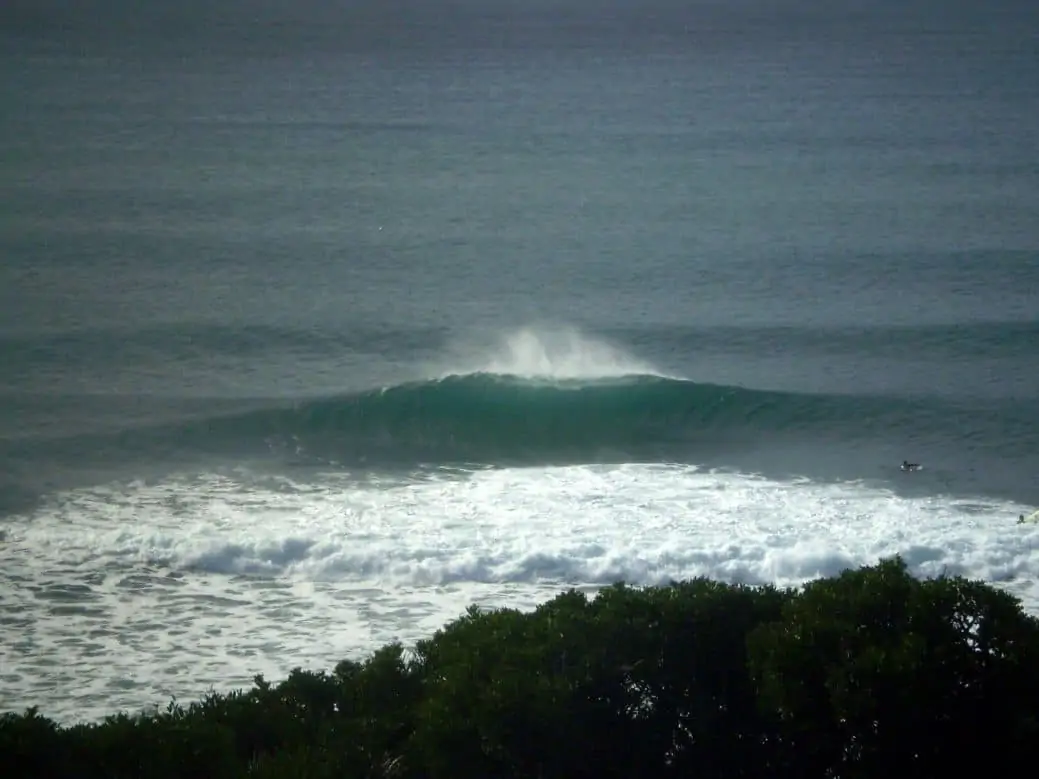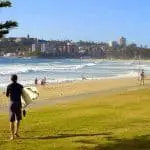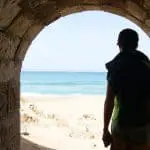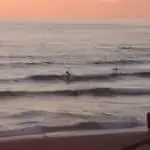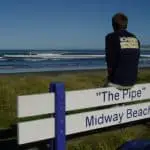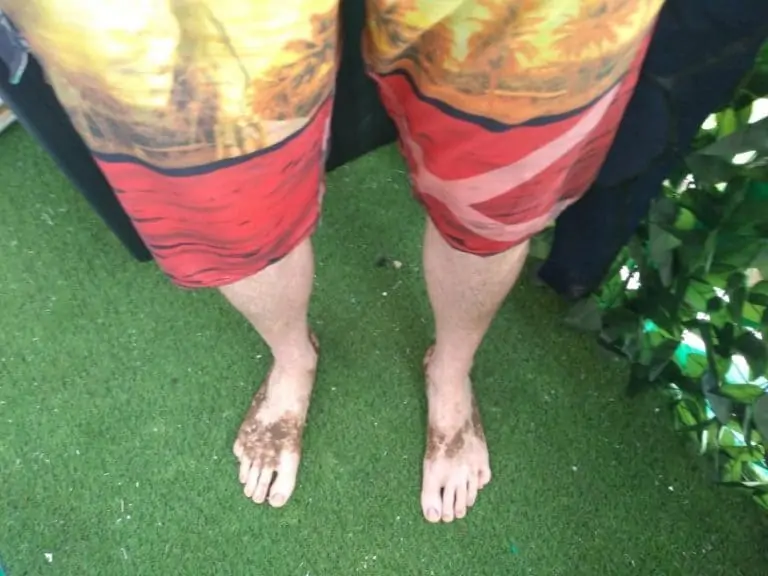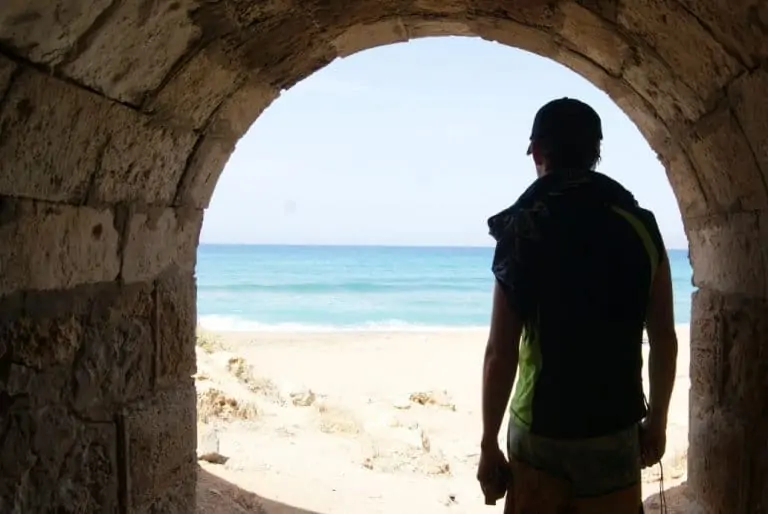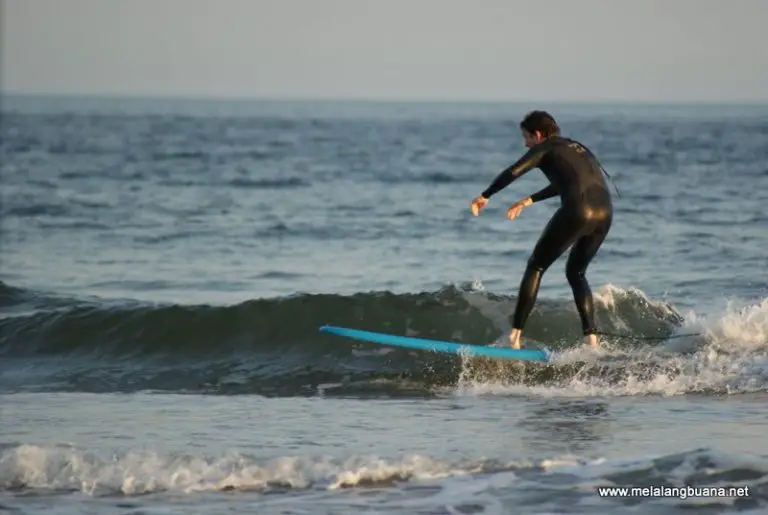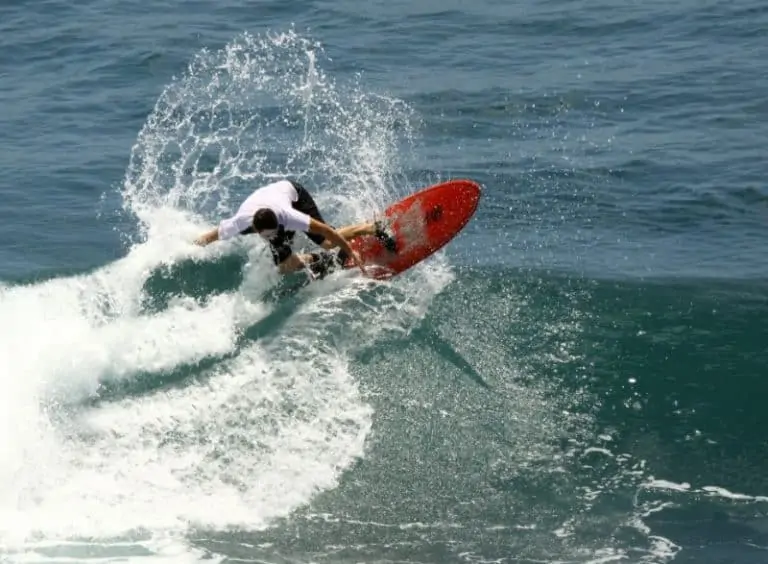Wind in a Surf Forecast – Step-by-Step Guide
Wind is really important in a surf forecast since the direction of the wind affects quality while the speed of the wind magnifies this effect. Generally, the best wind for surfing is usually a light offshore wind or no wind at all.
The lighter the wind, the better, but days without wind are rare so get in early for the best chance of the best winds. Anything up to 10 knots is usually fine but some spots are more wind affected than others, as I’ll explain below.
In terms of reading all the details in the wind part of a surf forecast, I’ve broken this down for you into a simple step-by-step guide using a real-world example combined with the main surf forecasting websites. Ready? Let’s go!
Look at the Wind Arrow (Not Swell!)
The main surf forecasting websites show arrows for both wind and swell and these can easily be confused.
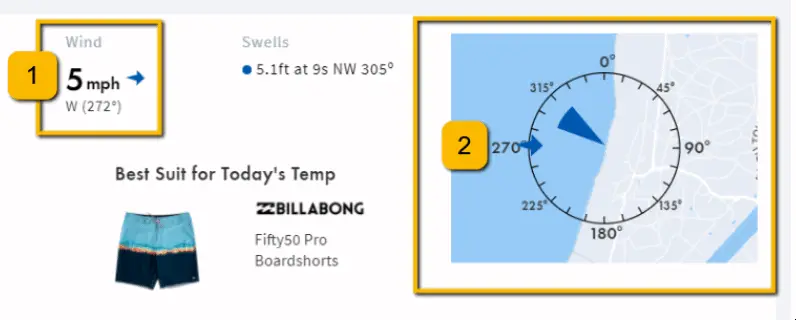
Make sure that you are looking at the wind arrow when reading a surf forecast from either of the main two websites, Surfline or MagicSeaweed. This is because, 9 times out of 10, the wind direction is the most important factor of these two elements for judging conditions from a surf forecast.
The wind direction is denoted by the ‘source’ of the arrow, not the direction the arrowhead points to, which is something it took me a really long time to understand in surf forecasts, so don’t feel bad if this all feels a little intimidating to start.
Check the ‘Aspect’ of the Beach/Spot
The wind direction in a surf forecast is only helpful if you know which direction the beach faces, or its ‘aspect’.
For example, if you have a beach in California that faces due west, then an offshore wind is from the opposite direction, an easterly. This is because the wind blows from the east, over land, and out to sea, towards the west, hence the term ‘offshore’ (from off the land over the shore and out to sea).
Note that the wind arrow on a surf forecast should face directly out to sea for the best, offshore winds, with the arrow at 90 degrees from the shoreline, as you can see in the example below from MagicSeaweed.
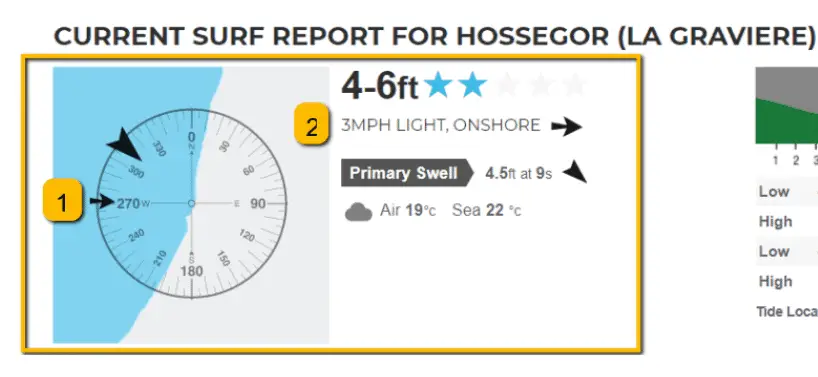
In the example above, the wind is cross-onshore, with MagicSeaweed labeling it as a ‘light onshore’ wind in the image, which is definitely handy.
When this arrow is not at a right angle to the shore, or comes in from the sea toward shore, then it will be cross-shore or onshore. You can read more about the different angles of wind and their impacts on waves in this extra helpful guide I prepared on winds for surfing!
Again, taking a California beach facing due west (or almost) as an example, for instance Black’s Beach in San Diego, the following table explains the winds for each of the directions for surfing with a rough quality rating for each:
| Wind Direction | Wind for Surfing | Quality for Surfing |
| Easterly (E) | Offshore | Best |
| Westerly (W) | Onshore | Poor |
| Northerly (N) | Cross-shore | Terrible |
| Southerly (S) | Cross-shore | Terrible |
| North-easterly (NE) | Cross offshore | OK |
| South-easterly (SE) | Cross offshore | OK |
| North-westerly (NW) | Cross onshore | Terrible |
| South-westerly (SW) | Cross onshore | Terrible |
Despite the quality ratings above, don’t be too put off as these winds are really more for doing advanced maneuvers.
Definitely still go surfing in onshore and cross-shore winds when you are learning because you will still catch lots of waves and be able to make progress. Onshore winds are worse for advanced surfers because they make the waves harder to perform turns on but they are still a lot of fun for learners.
Hopefully, you can also judge what the best winds for your local spot should be from the table above and a little practice. It won’t take long before you have it dialed in and know exactly what wind to look for in your surf forecast!
Lower Wind Speed is Better for Surfing
The sea’s surface is likely to be smoother in lower wind conditions, making for nicer rides. It’s also easier to balance on your board when riding without strong winds. As such, lower speeds are always better for surfing but you can still surf with stronger winds.
It also gets hard to read the waves and even see what you are doing when the winds are strong as there can be white water and spray going in all directions. This is exponentially harder the colder it gets since water sprayed in your face on a bitter winter’s day can be downright painful!
The Main Surf Websites’ Wind Forecasts are Similar
For anyone learning to surf, the best surf forecasting websites are:
- Surfline (original)
- MagicSeaweed
- WindGuru
Surfline Surf Forecast Explained
You can get a good surf wind forecast from Surfline for most spots for free. Surfline is the premier surf forecasting website and is out of the USA. It has the most advanced forecasting technology, with their own forecasting technology called ‘LOLA’.
Surfline also has some free webcams but many time out after a few seconds, requiring a premium subscription to see more.
All registered professionals get (or at least used to get) a free premium subscription to Surfline, so you know it is a trustworthy source when it is used by the world’s leading professional surf organization.
See below for the wind portion of a Surfline surf forecast to get an idea of what I mean:
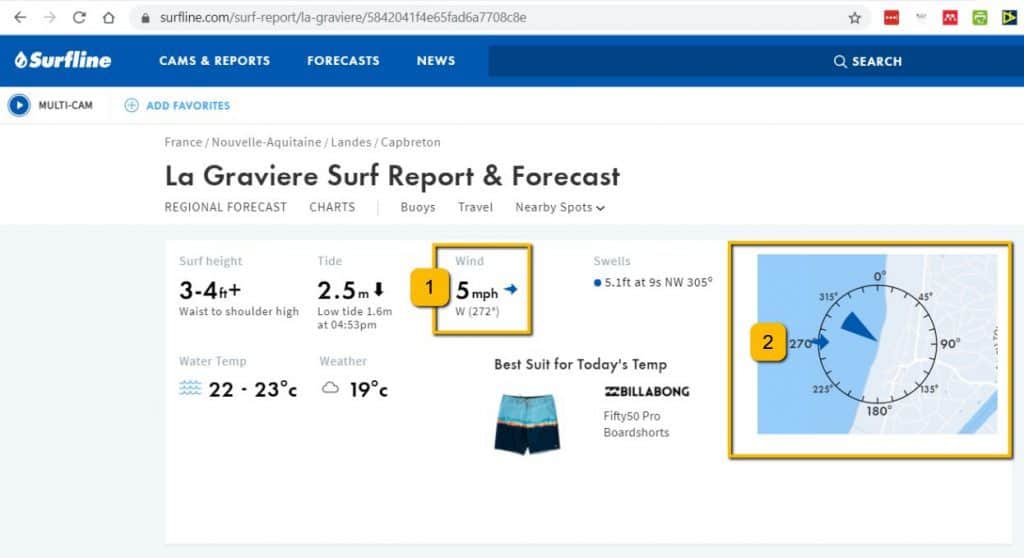
MagicSeaweed Surf Forecast Explained
MagicSeaweed offers a good wind forecast for surfing for free and is the premier European surf forecasting website, set up by an Englishman in the early 2000s. It also has some free webcams but again, will ask for payment for ad-free surf webcam viewing.
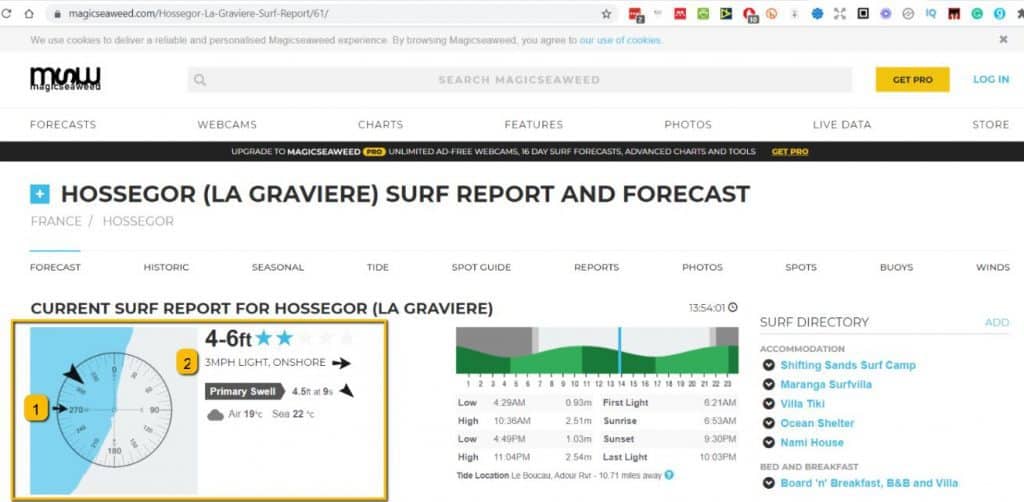
However, Surfline actually owns MagicSeaweed, having acquired it in 2017 (source).
Nonetheless, MagicSeaweed is still a great surf website and you might find you prefer it to Surfline, although the reports look quite similar.
There are other aspects I like about MagicSeaweed that Surfline doesn’t have, like its estimated wave height in photos, but that’s for another post.
WindGuru Surf Forecast Explained
WindGuru is a good surf forecasting website for winds but is the most technical surf forecasting website mentioned here. It also has no visual elements so it is better when you know what you are looking for.
With obvious focus being on wind, you can use WindGuru for cross-checking with the other websites on this list.
In all honesty, the color-coding (the darker the bigger the waves, the stronger the stronger the wind) on the WindGuru website means it is the one I use most often as I don’t get distracted by all the ‘noise’ that you can see on Surfline and MagicSeaweed.
WindGuru is straight to the point with data and wind and swell direction forecasts, making it minimalist and clean, if not simple to start with.
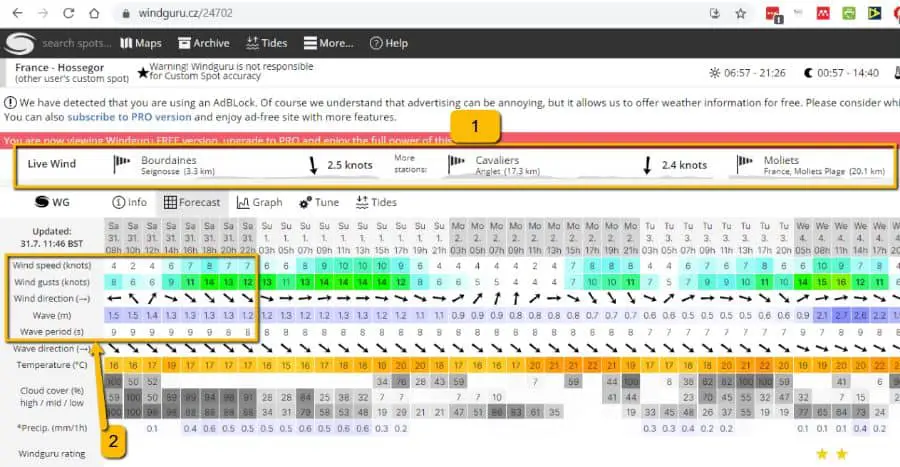
1. shows the live wind readings while 2. shows the wave height and wind speed for today.
Just use it along with the other forecasting websites here and you will find that you get used to it over time.
Webcams of Beaches are a Great Way to Check Wind for Surfing
I’m sure you are aware of webcams in general but you can google most beaches around the world and find a nearby webcam pointing out to sea, a very handy tool for surfers.
Just remember that Surfline and MagicSeaweed will try to make you pay for surf webcams but there may be another free one on the first page of google if you just leave the word ‘surf’ out of your search terms.
Australia has a good, free surf webcam website in SwellNet, which also gives wind conditions and surf forecasts, as well as snapshots of the waves.
Unfortunately, there aren’t many of these surf webcam websites for free elsewhere around the world so you’d best to get googling and see what you can find for your area!
Use Live Wind Readings for Most Accurate Conditions
Wind forecasts are helpful for surfing, but only to a point.
This is where the magic of live or real-time wind readings come in.
Weather Underground is a great website for checking winds for surfing as it has live readings for most places around the world through its network of weather stations submitted by users, pros and hobbyists alike. This means you can see the actual wind conditions at your local spot, with updates every few seconds.
Note that the other websites mentioned above are only forecasting tools for surfing winds whereas a site like Weather Underground gives you the actual wind, which is the best on the day.
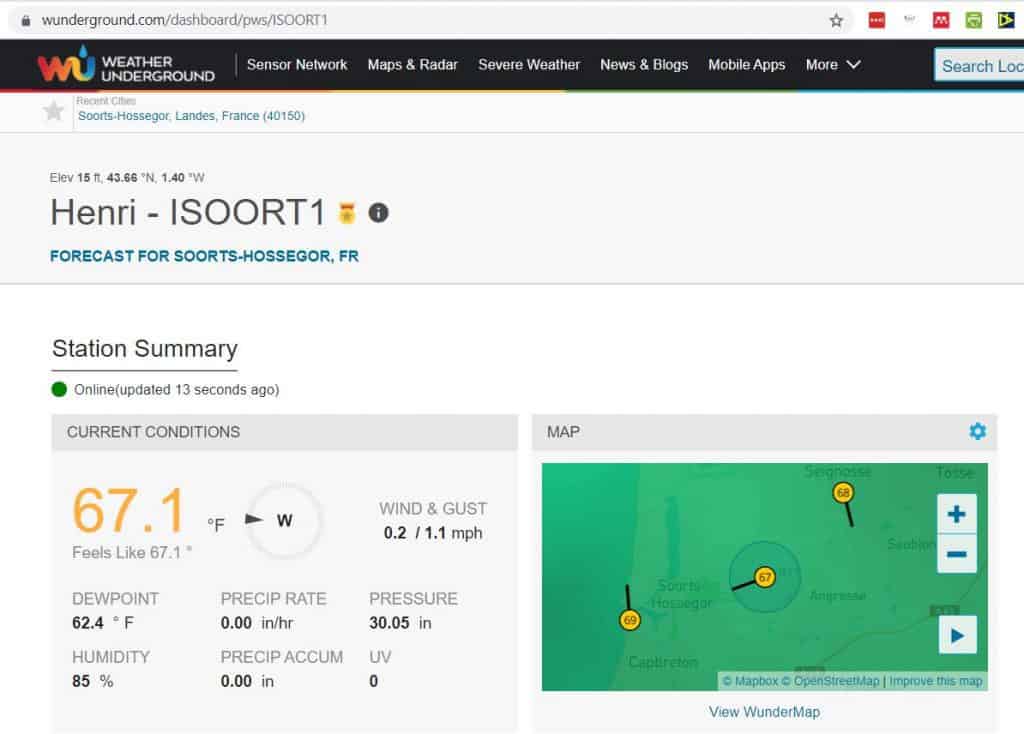
The image above shows that the wind was last updated ’13 seconds ago’, meaning that you know you are getting the most up-to-date wind conditions for your chosen spot.
Check for Shelter from Headlands or Hills
Once you know what winds you are looking for, it’s then time to get familiar with your local spots.
You will start to see different winds do strange things that may not always be obvious to the non-surfer.
On windy days, look to shelter from winds against headlands or close to cliffs. This means that the wind will be less when close to these and you should get better, cleaner waves for it.
You might also find that some valleys help to funnel winds down the valley and out of the over beach, making what might seem like a cross-shore wind into an offshore one.
The beauty of this is just being out there and checking all your conditions and seeing what happens at the beach.
Don’t forget that there’s a lot to learn when trying to read the wind in a surf forecast and it can take years to master, but the more you get out there at your local spots, the better you will be at predicting that next perfect swell.
Recognize the Different Winds on Webcams and at the Beach
When looking at webcams, you should be able to identify the different winds for surfing.
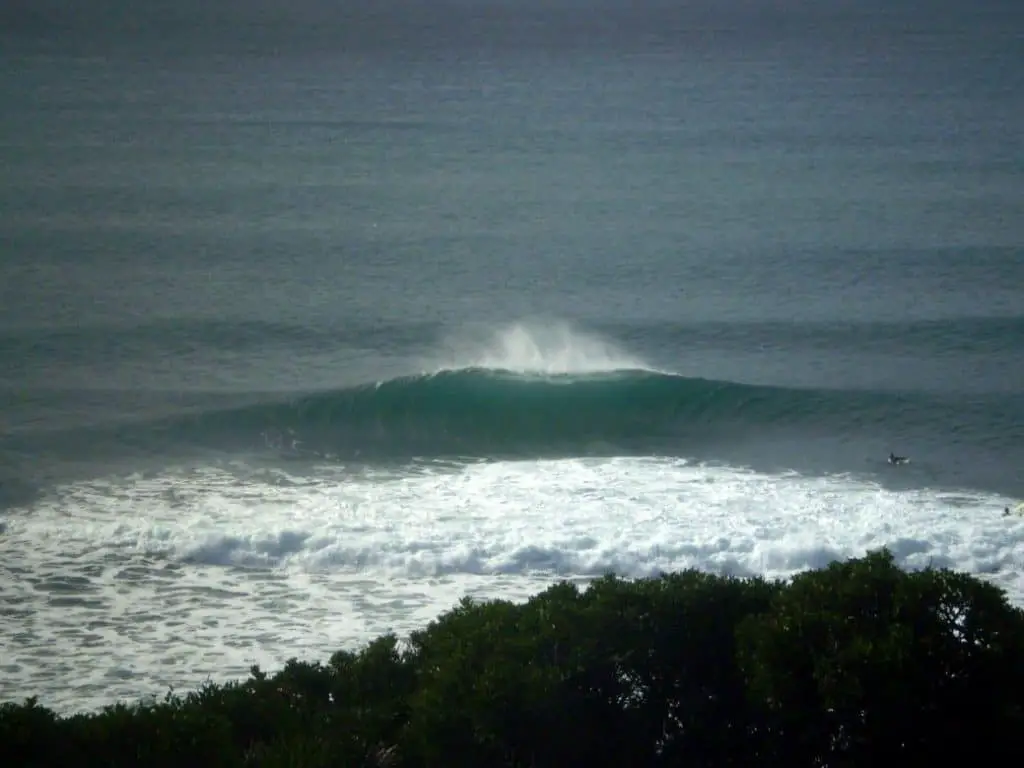
- Offshore winds leave a spray off the back of the breaking wave out to sea and leave a light ‘ruffling’ on the surface of the waves and sea.
- No winds mean no spray but the waves should look orderly and the sea’s surface ‘clean’ or ‘glassy’.
- Onshore winds make the waves crumble and mean that there is more whitewater visible.
- Cross-shore winds leave the sea’s surface choppy and messy with lots of white water. These are the worst for surfing.
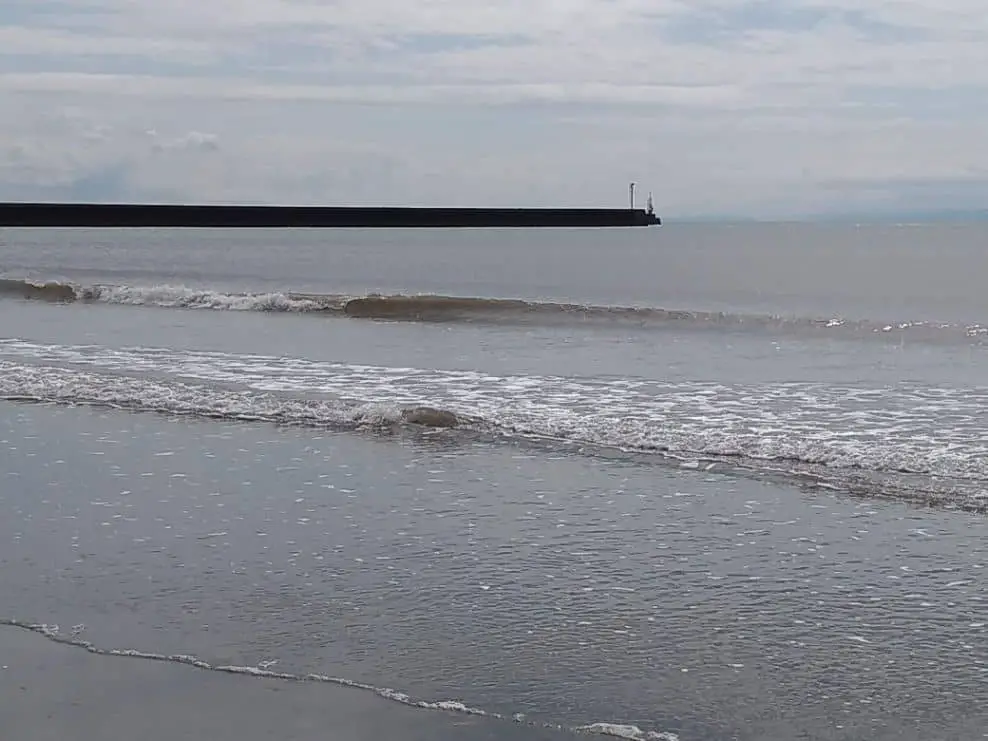
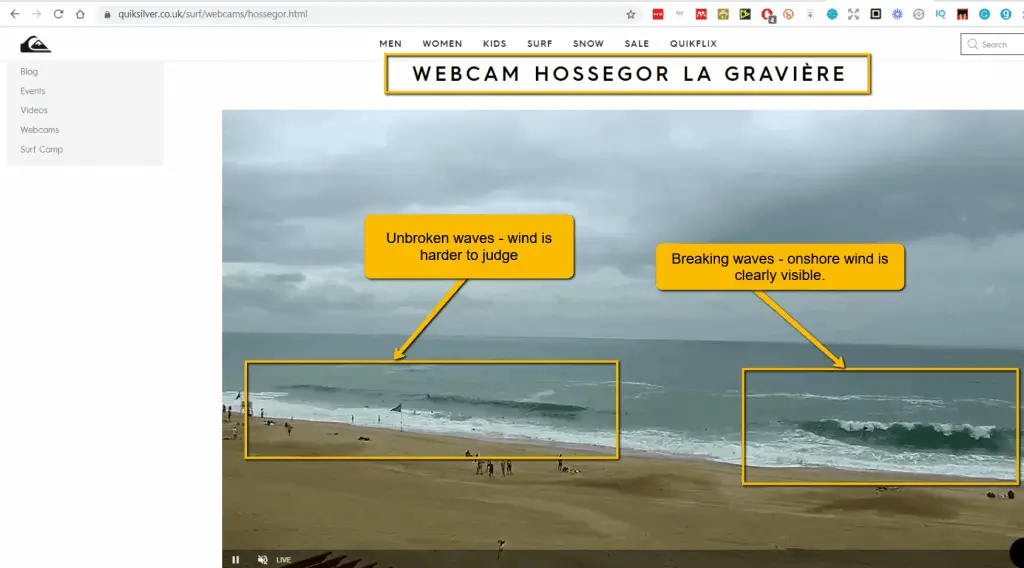
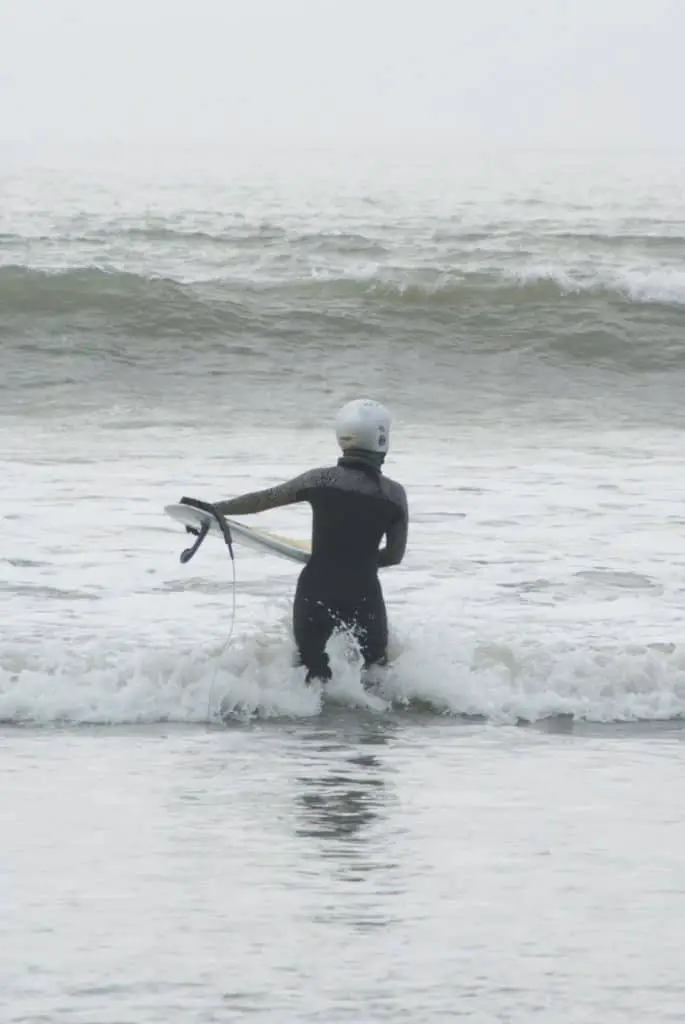
See more tips on surfing onshore, choppy waves here!
Surf in the Morning for Lightest Winds
The morning has the lightest winds for surfing, making the best time of day to go for most surfers, if you can get up early enough! Many spots turn onshore by mid-morning so try to get out there early.
However, use my guide to help you check the best tide for surfing at your local spot as there are many factors to consider there, too!
Take Soft-top or Helmet on Windy Days
Use a soft-top surfboard or wear a helmet if you are learning to surf in strong wind conditions. This is because the wind can blow your surfboard in unpredictable ways when you fall off (which happens a lot!). This means it can land on your head or someone else’s.
Check my guide to surf helmets for a good quality helmet on a budget and also my run-down of the best beginner surfboard brands for more insight!
Get Out There and Have Fun!
Surfing is still fun, even with strong or onshore winds. This means you should still get out in the surf even when the winds aren’t perfect because it’s the only way to learn. I’ve surfed 90% of the time in onshore or messy conditions, so I can say that I wouldn’t have had nearly as many hours in the surf if I was picky!
Remember, surfing in all conditions will help you learn faster, which I explain more on in my breakdown of how long it takes to learn to surf!
With that said, happy surfing and check those surf forecasts!
